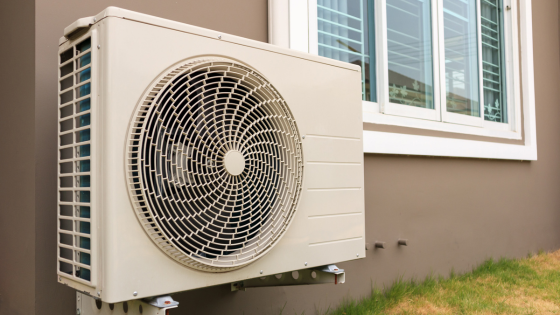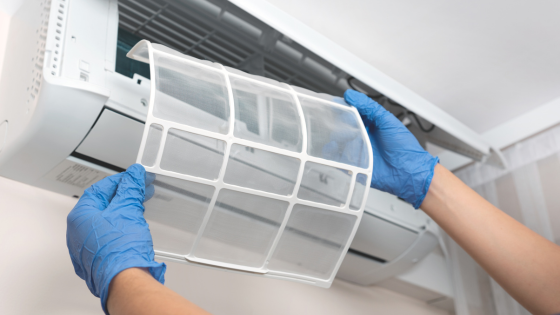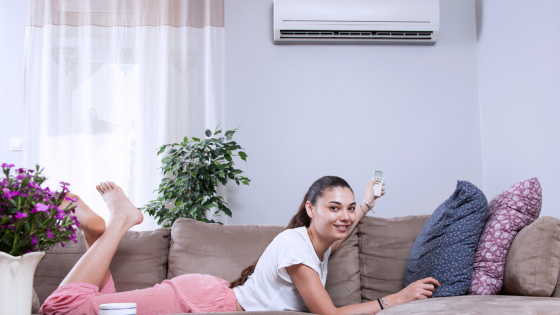Choosing the right AC for your home isn’t just about staying cool during the hot months. It’s about finding a system that’s efficient, cost-effective, and suitable for your space. This decision can significantly impact your comfort and your energy bills. In this guide, we’ll cover the essentials of selecting the ideal AC (air conditioner) unit for your home, including types, size, energy efficiency, installation, and costs.
Tips For Choosing the Right AC for Your Home
 1. Understand Different Types of AC Systems
1. Understand Different Types of AC Systems
When picking an AC, understanding the different types available is crucial. The most common types include window, split, portable, and central air conditioning systems. Window ACs are compact units that fit in a window and are suitable for cooling single rooms.
Split ACs consist of two parts: an indoor unit and an outdoor compressor, ideal for cooling one or more rooms without the need for window space. Portable ACs are movable units that can be transferred from room to room, offering flexibility but typically less efficiency.
Lastly, central AC systems are designed for cooling large homes or multiple rooms through a series of ducts. Each type has its own set of pros and cons depending on your home’s layout, installation feasibility, and cooling needs.
2. Size and Capacity: How to Determine What You Need
Selecting the right size and capacity for your AC is pivotal. An undersized unit won’t cool effectively, while an oversized one will use unnecessary energy. The capacity of an AC is measured in British Thermal Units (BTU), which indicates the amount of heat it can remove from a room per hour. To calculate the required BTUs, you need to consider the size of the area to be cooled. As a rule of thumb, an area of about 150 square feet needs approximately 5,000 BTUs. Additionally, it’s important to consider how long should it take AC to cool 1 degree as a measure of efficiency. A properly sized AC should manage this efficiently, without overexertion or excessive energy consumption.
3. Energy Efficiency Ratings
The energy efficiency of an AC is denoted by its Energy Efficiency Ratio (EER) and Seasonal Energy Efficiency Ratio (SEER) ratings. EER represents the ratio of cooling capacity (in BTU) to power input (in watts) under specific testing conditions. Higher EER numbers indicate better energy efficiency. SEER, meanwhile, measures how efficiently a cooling system will operate over an entire season, not just under specific conditions. Similar to the EER, a higher SEER rating means greater efficiency. Opting for a unit with a high EER and SEER rating can significantly reduce electricity consumption and lower your energy bills.

4. Installation Requirements
The type of AC you choose will determine the installation process. Window and portable ACs are generally simpler to install and can often be done without professional help. However, split and central AC systems usually require professional installation due to their complexity. It’s important to consider the installation cost when budgeting for a new AC system. Additionally, improper installation can lead to inefficient operation and increased maintenance costs over time, which underscores the importance of hiring qualified professionals for the job.
5. Cost Analysis
The upfront cost of an AC unit varies widely based on type, capacity, and features. While window and portable units can be more budget-friendly, central and split systems are generally more expensive but provide better cooling efficiency for larger spaces. It’s crucial to also consider the long-term costs associated with your AC, including energy consumption, maintenance, and potential repairs. Investing in a more expensive, energy-efficient unit can often save more money in the long run by lowering monthly utility bills.
6. Maintenance and Upkeep
Proper maintenance is crucial for ensuring your AC runs efficiently and lasts as long as possible. Each type of AC system has specific maintenance requirements. For window and portable units, it’s important to regularly clean or replace the air filters and check for any blockages that might impair airflow. Split and central systems often require more comprehensive care, including annual checks by a professional to ensure the system’s refrigerant levels are correct and its mechanical components are functioning properly.

Regular maintenance also includes cleaning the external components of the system, such as the condenser and evaporator coils, which can collect dust and debris that hinder performance. Ensuring that these components are clean can significantly affect the efficiency of your AC, reducing energy consumption and preventing costly repairs. For all types of AC, it’s essential to keep the area around the unit clear to maximize airflow and efficiency.
7. Warranty and Support
Before finalizing your purchase, consider the warranty and customer support offered by the manufacturer. A strong warranty can protect you from expensive repairs in the early years of your AC’s life. Look for warranties that cover both parts and labor for a minimum of several years. Central and split system warranties are particularly important because these systems are more complex and costly to repair. Customer support is another crucial factor. Reliable support can ease the process of installation, maintenance, and troubleshooting. Make sure the manufacturer has a reputation for responsive and helpful customer service. This can save you time and frustration if issues arise with your AC system.
8. Noise Levels
The noise level of an AC unit is an important consideration, especially in bedrooms or quiet areas. Each type of AC system generates different levels of noise. Window ACs, for instance, tend to be noisier than split systems because the compressor and fan are located within the same unit inside the room. On the other hand, the compressors for split and central systems are typically located outside, reducing indoor noise. Manufacturers often list the noise levels of their units in decibels (dB). A lower decibel rating means the unit is quieter. When selecting an AC, consider the layout of your home and the placement of the unit to minimize its impact on your daily activities and sleep.
Conclusion
Selecting the right AC for your home involves a careful analysis of your specific needs, from the size and type of unit to the features and maintenance it requires. By understanding these aspects, you can ensure that your AC not only keeps your home comfortably cool but also operates efficiently, saving you money in the long run. Remember, the right AC is an investment in your home’s comfort and your own peace of mind.


